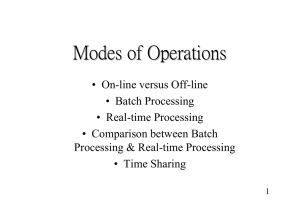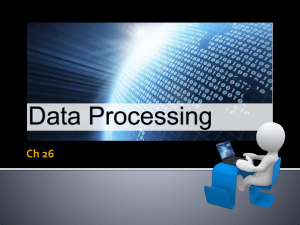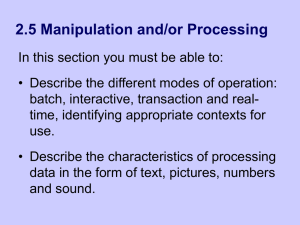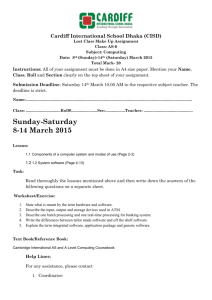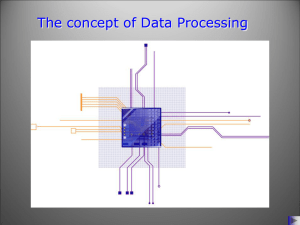Modes of Processing - Computing and ICT in a Nutshell
advertisement
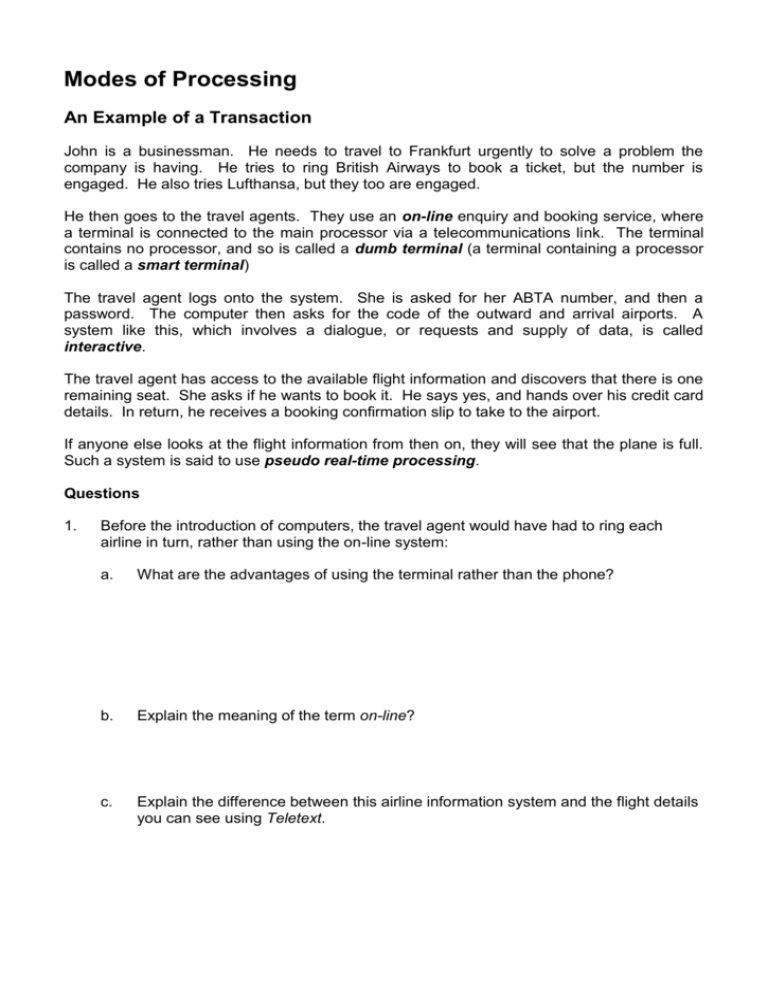
Modes of Processing An Example of a Transaction John is a businessman. He needs to travel to Frankfurt urgently to solve a problem the company is having. He tries to ring British Airways to book a ticket, but the number is engaged. He also tries Lufthansa, but they too are engaged. He then goes to the travel agents. They use an on-line enquiry and booking service, where a terminal is connected to the main processor via a telecommunications link. The terminal contains no processor, and so is called a dumb terminal (a terminal containing a processor is called a smart terminal) The travel agent logs onto the system. She is asked for her ABTA number, and then a password. The computer then asks for the code of the outward and arrival airports. A system like this, which involves a dialogue, or requests and supply of data, is called interactive. The travel agent has access to the available flight information and discovers that there is one remaining seat. She asks if he wants to book it. He says yes, and hands over his credit card details. In return, he receives a booking confirmation slip to take to the airport. If anyone else looks at the flight information from then on, they will see that the plane is full. Such a system is said to use pseudo real-time processing. Questions 1. Before the introduction of computers, the travel agent would have had to ring each airline in turn, rather than using the on-line system: a. What are the advantages of using the terminal rather than the phone? b. Explain the meaning of the term on-line? c. Explain the difference between this airline information system and the flight details you can see using Teletext. Real-time processing With real-time processing, the information in the system is updated automatically and instantly as the inputs occur. An example might be a car engine management system – when you press the accelerator the engine reacts instantly; it doesn’t store the information and update the engine speed overnight! Batch Processing Some systems don’t need to react quickly. All the data can be collected and processed together. Payroll systems, for example, only need to pay people monthly, and all the processing can be done at once at the end of month. The batch processing is usually done on a regular basis, e.g. daily, weekly, monthly, etc. and is done without user intervention. Transaction Processing Transaction processing takes place when it is needed, rather than on a regular basis as it is with batch processing. In a payroll system, for example, someone might leave halfway through the month and need paying then, rather than waiting until everyone else is paid. Questions 2. Tick two applications that use batch processing: 3. Monitoring a patient’s heart-beat Producing electricity bills Air traffic control system On-line cinema seat reservation system Clearing cheques Recording the temperature in an experiment Use the following words to complete the sentences below: on interactive control real-time batch a. If a device is ___ - line it means that it is under the control of the central processing unit (or connected to it via some sort of network). b. The type of system where the computer conducts a “conversation” with the user is called an __________________ system. c. A system that reacts immediately to inputs and updates files or outputs immediately is called a _____ - ______ system. d. ________________ systems must always be real-time systems. e. _____________ processing is used where a job is all done at once, rather than in parts.
